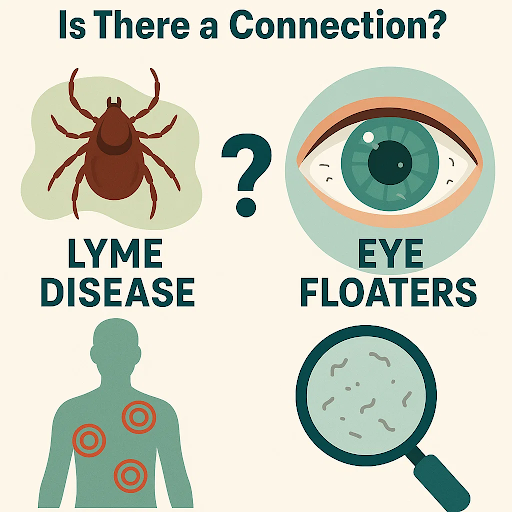
Introduction
Eye floaters are the tiny fax, strands, or cobweb- like shapes that drift across the vision.
Are you facing that? Do you feel that you cannot explain it to the physician or loved ones?
Could Lyme disease affect your eyes or for that matter even the nervous system, in the ways that might as well lead to these visual disturbances?
In this article, we will dive into all the possible links between Lyme disease and eye floaters- and what you can actually do about it.
How Lyme Disease affects the Nervous System
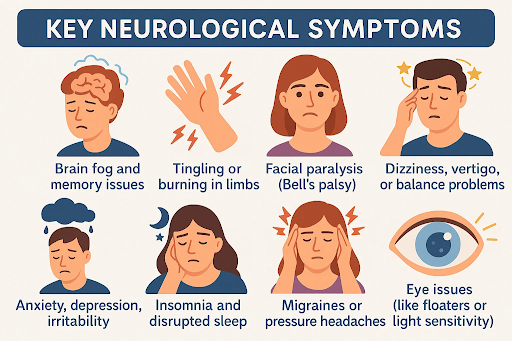
When Lyme disease transmits to the nervous system, it is called neuroborreliosis. It impacts the central nervous system and peripheral nervous system.
Why?
- Lyme bacteria crosses the blood- brain barrier.
- It also triggers the inflammatory condition in the brain and nerves
- Confuses the immune system which gives rise to the chronic symptoms.
Other Factors worsen neuro symptoms:
- Co- infections such as Bartonella and Babesia
- Mold Toxicity
- Chronic conditions
- Immune dysfunction
Can Lyme Disease Cause Eye Symptoms?
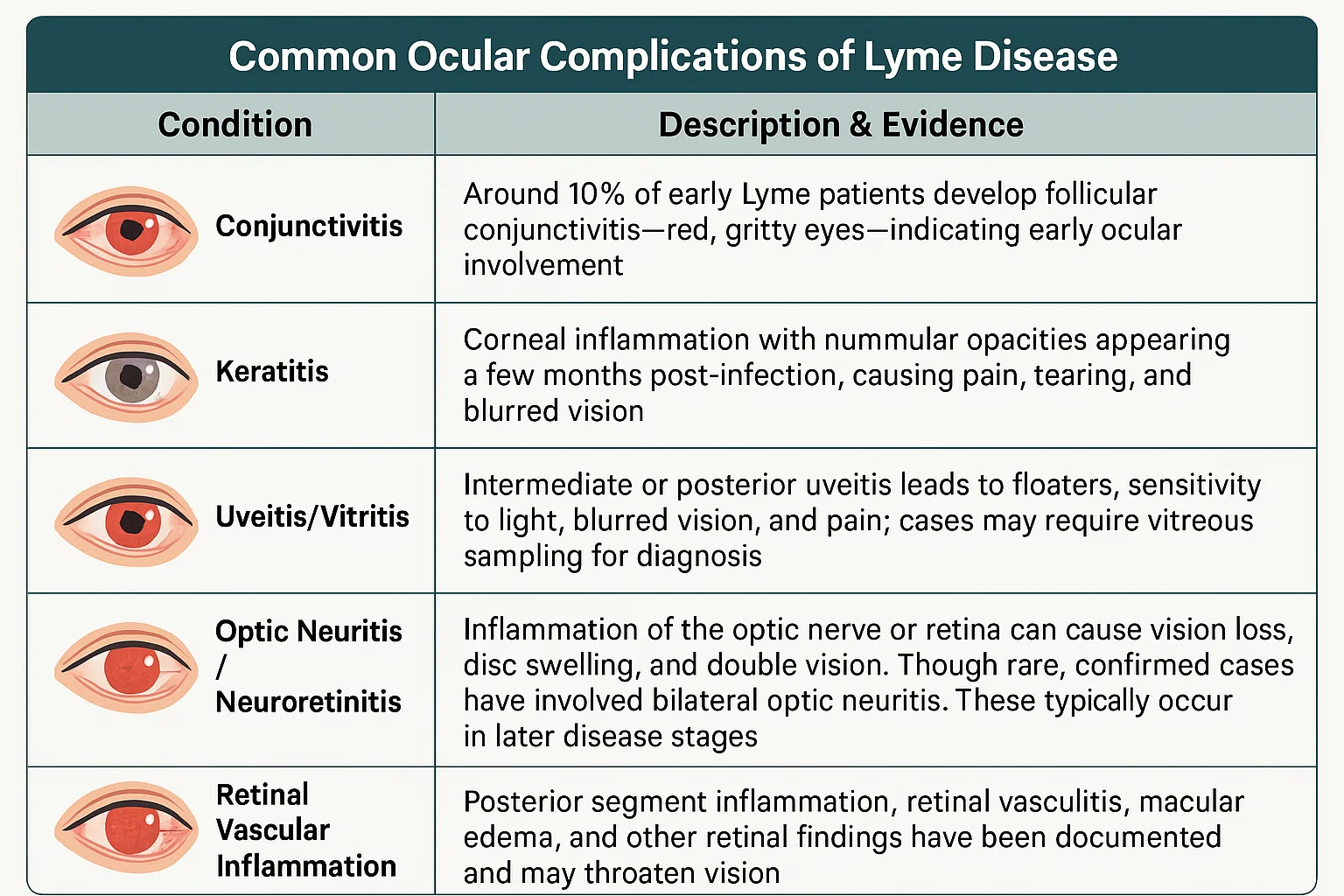
Considering the eye symptoms is quite necessary. It is rare but it has great significance. Eye inflammation in Lyme endemic regions when clubbed with Lyme classic symptoms; can help in prompt testing.
There are some notable symptoms related to the eye or ocular regions. Some of them are blurred vision, floaters, and sensitivity towards light.
- Floaters: These are visible particles that drift in the visual field due to inflammatory conditions in the vitreous fluid. This is also called vitritis.
- Blurred Vision: It is caused by corneal, uveal, or optic nerve inflammation. This can be minimized by proper antimicrobial therapy.
- Light Sensitivity: This is resulted from the inflammation of the iris or choroid. The add on symptoms also include redness and eye pain.
Eye Floaters: What’s Normal VS What’s Concerning?
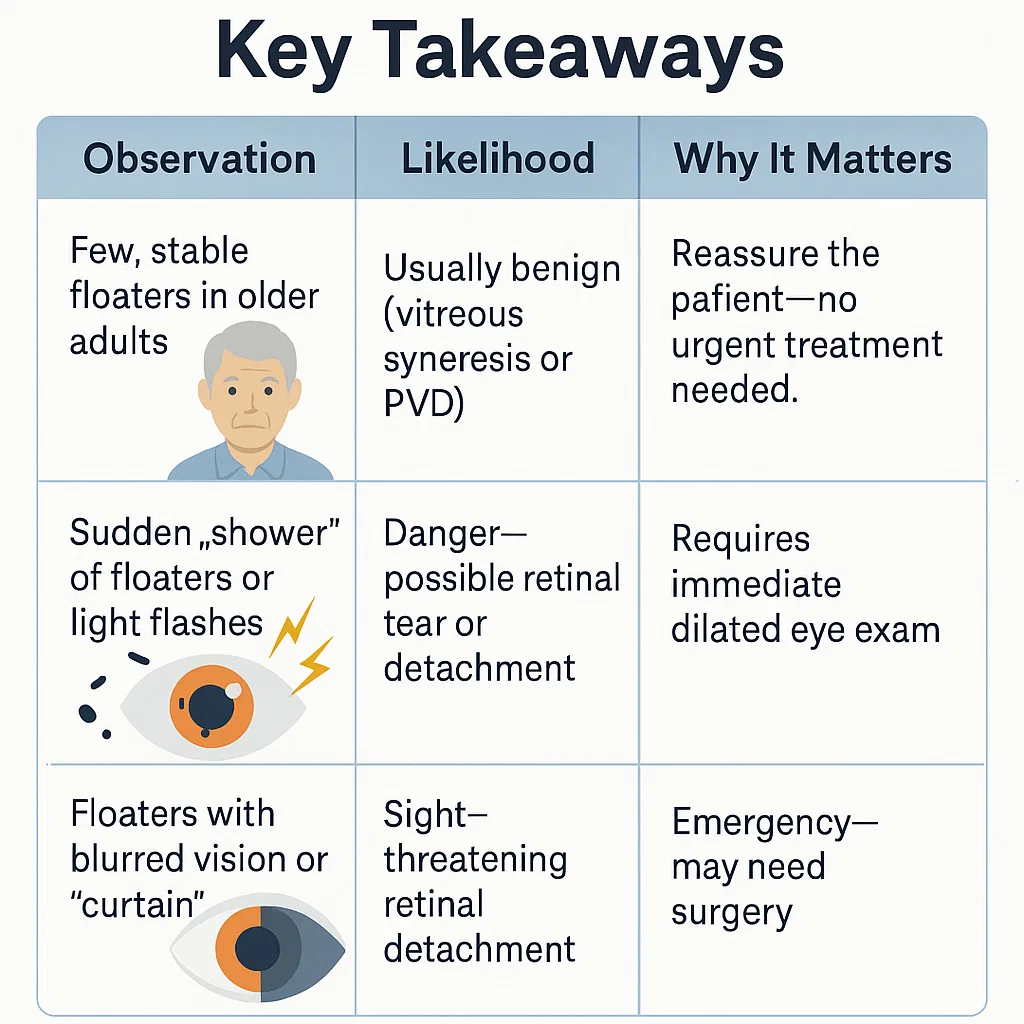
What’s Normal—
Most eye floaters are quite harmless in action and they do not affect the long- term vision or ocular functions. In fact, according to recent studies, about 76 percent of individuals report floaters and about 33 percent say that it affects their vision. These are said to be benign in nature.
- Aging: The eye floaters due to aging is also called vitreous syneresis. Common after 50 years of age as the gel in the eye liquefies that causes casting shadows to appear.
- Myopia: Nearsighted individuals usually face floaters more than often. Usually, 3-4 times more likely to occur.
- Posterior Vitreous Detachment (PVD): The vitreous fluid is pulled away from the retina which leads to the conditions such as floaters or flashes as it is detached. This is also a part of the normal aging process.
What’s Concerning— (All these are also seen to be common in individuals with Lyme disease)
- Sudden increase in floaters or flashes: Rapid onset or shower of flashes indicate retinal tear or detachment.
- Blurred Vision or shadowing over vision: A “curtain” over a part of vision, or loss of peripheral vision.
- Loss of peripheral vision: This signals inflammatory conditions or infection.
Medical Research: What the Science Says
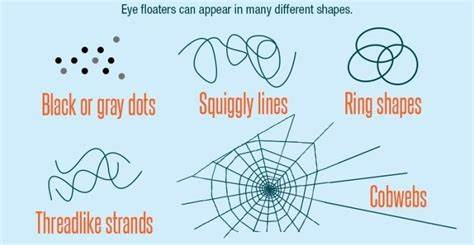
Current Findings on Eye Involvement in Lyme : Scientific studies confirm that Lyme disease can affect the eyes, though this is often underreported. Documented complications include:
- Uveitis (inflammation of the eye’s middle layer)
- Optic neuritis (inflammation of the optic nerve)
- Retinal vasculitis, conjunctivitis, and visual floaters
A 2023 review in Ocular Immunology and Inflammation notes that neuroborreliosis can lead to subtle but serious ocular symptoms, especially in late-stage Lyme.
Gaps in Traditional Literature
Mainstream medical journals often focus on early Lyme symptoms, overlooking long-term or chronic ocular issues. Many case reports are dismissed as anecdotal or attributed to co-infections rather than Lyme itself.
What’s Missing
- Lack of large-scale studies on persistent visual symptoms in Lyme patients
- Minimal representation of patient-reported eye issues in clinical guidelines
- Delayed diagnosis due to narrow diagnostic criteria and reliance on outdated testing methods
Treatments for Floaters Related to Lyme

Lyme- focused protocols:
When floaters are tied to Neuroborreliosis or ocular Lyme, treatment targets the infection itself.
- Antibiotic therapy (e.g., doxycycline, ceftriaxone) is often the first line, based on ILADS or Burrascano protocols.
- Herbal antimicrobials (e.g., Japanese knotweed, cat’s claw) may be used as adjuncts in chronic cases.
- Monitor for Herxheimer reactions, which can temporarily worsen visual symptoms.
Vision Support and Anti- Inflammatory Approaches:
Supporting eye health and reducing inflammation can help manage floaters:
- Omega-3 fatty acids, curcumin, and lutein/zeaxanthin may support retinal and optic nerve health.
- Low-dose steroid eye drops might be used short-term for inflammation (only under specialist care).
- Blue light filters, hydration, and regular eye exams support overall visual comfort.
Conclusion
- Mostly eye floaters are quite common and often harmless in nature, when it comes in the context of Lyme disease.
- They could signal the underlying inflammation, neurological issues or even existing infections affecting the vision.
- Thereby, understanding this connection can help you seek the right care. If you are noticing new or deteriorating floaters, then it is worth listening to your body.
What’s Next for You?
Ready to explore a more complete path to recovery? Join the Lyme Support Network Community.
References
Kilic Muftuoglu, Ilkay & Akova, Yonca & Gungor, Sirel. (2016). A Case of Lyme Disease Accompanied by Uveitis and White Dot Syndrome. Türk Oftalmoloji Dergisi. 46. 241-243. 10.4274/tjo.25991. (PDF) A Case of Lyme Disease Accompanied by Uveitis and White Dot Syndrome.
Lesser RL. Ocular manifestations of Lyme disease. Am J Med. 1995;98(4A):60S‑62S. doi:10.1016/s0002‑9343(99)80045‑x. pubmed.ncbi.nlm.nih.gov.
Ocular manifestations of tick‑borne diseases. Ocular Immunol Inflamm. n.d.;. Available from: https://www.sciencedirect.com/science/article/abs/pii/S0039625716300492 pmc.ncbi.nlm.nih.gov+4sciencedirect.com+4pubmed.ncbi.nlm.nih.gov+4
Hopkins Lyme Disease Research Center. Did you know that Lyme disease can affect your eyes? HopkinsLyme.org. May 16, 2022. https://www.hopkinslyme.org/lyme‑disease‑awareness/did‑you‑know‑that‑lyme‑disease‑can‑affect‑your‑eyes/ hopkinslyme.org







